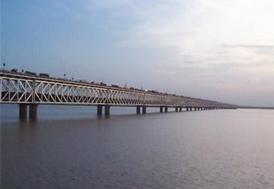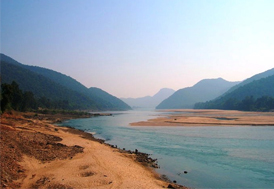India Rivers


India Our Neighbours
May 5, 2020

Indian Sport Personalities
June 2, 2020Rivers are natural flowing water bodies, generally of fresh water, that flow towards either an ocean, a lake, a sea or another river. They are a part of the hydrological cycle.
Let’s see some of the rivers in India:
| River | Description |
|---|---|
  |
Source: In Tibet Kalish Range 5080 mts. Outflow: Arabian sea Length(km): 2900 |
  |
Source: Lake Mana Sarovar Outflow: Bay of Bengal Length(km): 2900 |
  |
Source: Gangotri Outflow: Bay of Bengal Length(km): 2510 |
  |
Source: Nasik Hills Outflow: Bay of Bengal Length(km): 1450 |
  |
Source: Amarkantak hill in Madhya Pradesh Outflow: Arabian sea Length(km): 1290 |
  |
Source: Near Mahabaleshwar in Maharashtra Outflow: Arabian sea Length(km): 1290 |
  |
Source: Garhwall in Yamunotri Outflow: Bay of Bengal Length(km): 1211 |
  |
Source: Amarkantak Plateau Outflow: Bay of Bengal Length(km): 890 |
  |
Source: Hills of Coorg, Karnataka Outflow: Bay of Bengal Length(km): 760 |
  |
Source: Bettul Outflow: Arabian sea Length(km): 724 |
Why rivers are Important:
- Rivers carry water and nutrients to areas all around the earth. They play a very important part in the water cycle, acting as drainage channels for surface water.
- Rivers drain nearly 75% of the earth’s land surface.
- Rivers provide excellent habitat and food for many of the earth’s organisms.
- Rivers provide travel routes for exploration, commerce and recreation.
- River valleys and plains provide fertile soils.
- Rivers are an important energy source. Steep rivers are used to power hydroelectric plants and their water turbines.
River pollution:
Many towns and factories are built near rivers so that they can use water from the river. But sometimes the water is not cleaned before it is put back into the river. This dirtying of water (also air and soil) is called pollution.




Solutions on River pollution:
| Solution | Description |
|---|---|
|
|
1. Wastewater treatment consists of removing pollutants from wastewater through a physical, chemical or biological process. 2. The more efficient these processes are, the cleaner the water becomes. |
|
|
1. It is essential to have climate-friendly crops, efficient irrigation that reduces the need for water and energy-efficient food production. |
|
|
1. Anti-pollution laws can as well establish measures that put restrictions for top water pollution problems. 2. For example, sewage and industrial waste treatments and garbage management. |
|
|
1. Domestic sewer systems that collect sewer waste to a central collection point for treatment. 2. Afterwards it is emptied into lakes, rivers or oceans to undergo biological breakdown. |
River-linking project:
- Prime Minister Narendra Modi’s ambitious Rs 5.5 lakh crore Rivers Inter-link plan is a large-scale civil engineering project that aims to link rivers through a network of reservoirs and canals across India.
- The mission of this programme is to ensure greater equity in the distribution of water by enhancing its availability in drought-prone and rainfed areas.


Interesting Facts:
- Hirakund Dam in Odisha, the largest dam in South India is built on Mahanadi.
- The highest waterfall in India – Jog Falls is formed when Sharavathi river flows from a height of 829 ft.
- The Kumbha Mela of South India is held on the banks of Godavari River in Nashik. Scenery around Narmada is considered to be the most beautiful as it flows through the Marble rocks of Jabalpur.
- The Brahmaputra river is known as Tsang Po in China, Jomuna in Bangladesh and, Dihang in Arunachal Pradesh.
- India’s longest bridge (9.15 Km) is built on Brahmaputra river connecting Dhola, Arunachal Pradesh to Sadiya, Assam.
- Chambal, Narmada and, Brahmaputra are among the cleanest rivers in India.





